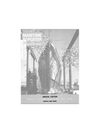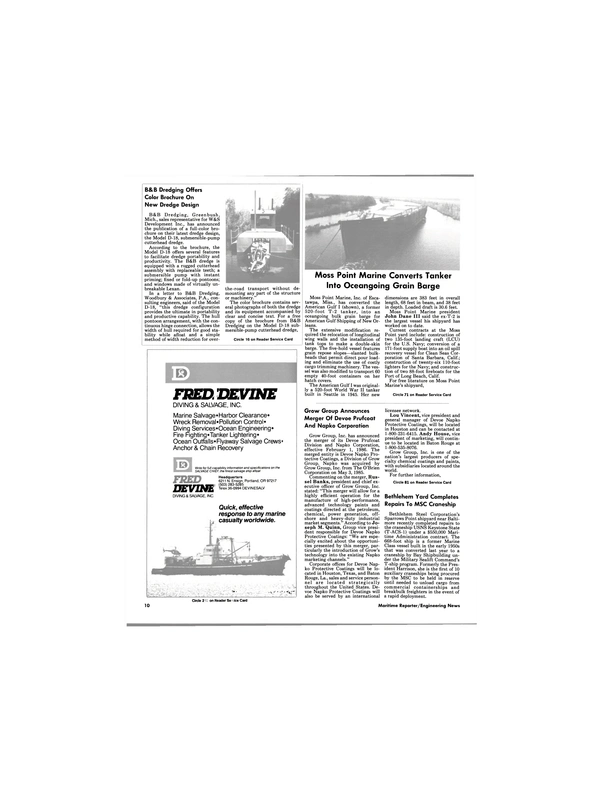
WATERCOM Telecommunications System To Be Fully Operational This Year
The first phone call through the revolutionary WATERCOM® Automated Maritime Telecommunications System was placed by Ron VonColln, program manager at Tracor Applied Sciences, Inc., aboard a boat on the Potomac River in Washington, D.C., to Rick Baker, executive vice president of Waterway Communications System, Inc., in his office in Jeffersonville, Ind. The call demonstrated the system hardware and operations control that will form a new communications network to provide voice and customized data services between inland river towboats and their central offices. Full service on the network will be available at mid- 1986.
Tracor Applied Sciences, a subsidiary of Tracor, Inc., has a turnkey contract from Waterway Communications covering the design, construction, and installation of the WATERCOM system.
The new system, through a series of 54 shore stations, will provide continuous coverage of approximately 4,000 miles of inland waterways.
It will serve the Mississippi River from south of New Orleans to Minneapolis/St. Paul, the Illinois River from the Mississippi to Chicago, and the Ohio River from Cairo to Pittsburgh. On the Gulf Intracoastal Waterway, coverage will extend from Apalachicola, Fla., to Brownsville, Texas, with incidental coverage on the Gulf of Mexico.
WATERCOM will provide service comparable in quality to that of the National Telephone Network, and in fact will connect to NTN lines just like any other telephone network.
A barge company operator direct-dials the boat number he wishes to reach and is connected automatically. Operator assistance is available only when requested by the user.
The WATERCOM system consists of three major components: vessel telephones, shore stations, and the Operations and Control Center at the home office in Jeffersonville.
Vessel telephones consist of a radio transmitter and receiver, a microprocessor-based phone control unit, and the main telephone handset.
An optional extension phone may be added to provide credit card calls from facilities in the crew's quarters.
Each of the 54 shore stations serves compatible equipped vessels within its operating range, thereby providing continuous telephone service.
Each station is interconnected with the local area central control office, from which incoming and outgoing calls are routed to and from the vessel.
The Operations Control Center and its mainframe computers are the heart of the WATERCOM system.
It provides the principal automatic switching and routing functions for all long-distance calls entering the system. Through fullperiod leased data lines, the OCC monitors and controls operations at each of the shore stations and acts as a highly sophisticated telephone system, with additional data-processing capabilities.
The concept of WATERCOM started in the 1970s when 16 major barging companies joined together to improve inland river telecommunications, a need supported by indepth research of their industry. In 1981, American Commercial Lines, Inc. acquired WATERCOM from the barging group. That same year the Federal Communications Commission allocated frequencies for automated marine communications systems. WATERCOM applied for license authority, which the FCC granted in 1982. The elements of the system development included marketing research, system design to meet communication needs, and acquisition of properties and construction along the inland waterways.
Finally, in the summer of 1985, construction of the Operations and Control Center building in Jeffersonville was completed.
For further information and free literature on the WATERCOM system, Circle 53 on Reader Service Card
Read WATERCOM Telecommunications System To Be Fully Operational This Year in Pdf, Flash or Html5 edition of March 1986 Maritime Reporter
Other stories from March 1986 issue
Content
- BUILD AND CHARTER' —A VITAL STEP IN THE RIGHT DIRECTION page: 6
- Navy Adding 13 Ships Costing $206.7 Million To Ready Reserve Force —Four To Be Converted page: 7
- Lips Designs Detachable Blade Propellers For Amoco page: 7
- Gary Carlson Joins Midland-Ross Corp. As Group Executive VP page: 8
- WATERCOM Telecommunications System To Be Fully Operational This Year page: 8
- $31-Million Development Project Begins At Port Of Miami page: 9
- B&B Dredging Offers Color Brochure On New Dredge Design page: 10
- Moss Point Marine Converts Tanker Into Oceangoing Grain Barge page: 10
- Grow Group Announces Merger Of Devoe Prufcoat And Napko Corporation page: 10
- Todd's San Pedro Yard Launches Guided Missile Frigate 'Davis' page: 11
- LATEST CHANGES IN U.S. NAVY SHIPBUILDING PROGRAM page: 12
- NEW NAVY BUDGET: OVER $100 BILLION page: 22
- NAVY CONTRACTS page: 30
- USCG Awards Aquafacs Inspection, Maintenance And Repair Contract page: 33
- Teleflex RMVAs Eliminate Corrosion, Misalignment And Binding Problems page: 33
- Marine Corps League's 6th Annual Exhibition Set For July 22-24 In D.C. page: 36
- 1986 VALVE EQUIPMENT GUIDE page: 38
- Fincantieri Awarded Orders For Seven Ships page: 45
- Japan Radio Offers New Literature On Products— GSC-80 ODARS And JLR-4000 GPS Navigator page: 45
- Bonner Elected Chairman, Solley Vice Chairman Of VMA page: 46
- Infrasonik Receives Order For Soot-Removal Systems From U.S. Shipping Line page: 47
- AWO: PROMOTING, PROTECTING AND DEFENDING THE BARGE AND TOWING INDUSTRY page: 48
- INTERCEPTING AND INFLUENCING THE REGULATORY PROCESS page: 49
- THE BARGE AND TOWING INDUSTRY: A LEGISLATIVE REVIEW page: 50
- THE INVISIBLE INDUSTRY page: 52
- R.J. Paine Named Marine Marketing Manager At Penske page: 54
- Intertrade Given Additional Navy Contract For Marine Fenders page: 54
- Stellar Technology's Battleship Spare Parts Depot Locates In Camden page: 55
- Coastal Corporation Purchase Of Texaco Terminal And Pipeline Interest Expands Market For Belcher Oil page: 56
- Big Heavy-Lift Cargo Carrier Delivered By Hitachi Zosen page: 56
- Free 28-Page Color Catalog On Bearings Offered By Duramax page: 58
- Kockums To Retrofit Swedish Sub With Air-Independent Stirling Engine page: 59
- Curtis Bay Towing Elects Swensen VP And General Manager page: 59
- Hempel Group Founder Dies At Age Of 91 page: 60
- Duff And Butera Hired At CDI Marine Company page: 60
- Record Well Depth For Floating Drilling Rig Set By ODECO's 'Ocean Rover' page: 61
- Michell Bearings Appoints Peter Pagan President page: 61
- TDI Introduces New Infrared Thermometer Kit page: 61
- MarineSafety Initiates Tug-Barge Simulator Training Course page: 62
- Alden Introduces Series Of Marinefax Recorders page: 62
- New Aeroquip Bulletin Explains Hose Assembly Machine Advantages page: 64
- Wtirtsilti Delivers Advanced Icebreaker To Finnish Board Of Navigation page: 64
- Congressional Conferees Agree To Appropriate $228.4 Million For Strategic Sealift Program page: 65
- SNAME Chesapeake Section Meeting Hears Paper On SWATH Survey Ship page: 65
- Garrett Division To Participate In Design Of New Engine For Mid-Sized Navy Ships page: 68
- Lindenau Installs Firefighting System On Offshore Supply Boat page: 69
- Schaffran Offers Free Literature On Propellers And Shaft Liners page: 69
- Marco-Seattle Awarded Cargo Ship Conversion page: 70
- Ellicott Machine Forms New Engineering Company —Morse Named Manager page: 70
- Wartsila Delivers Passenger/Vehicle Ferry To EFFOA-Finland Steamship page: 75


